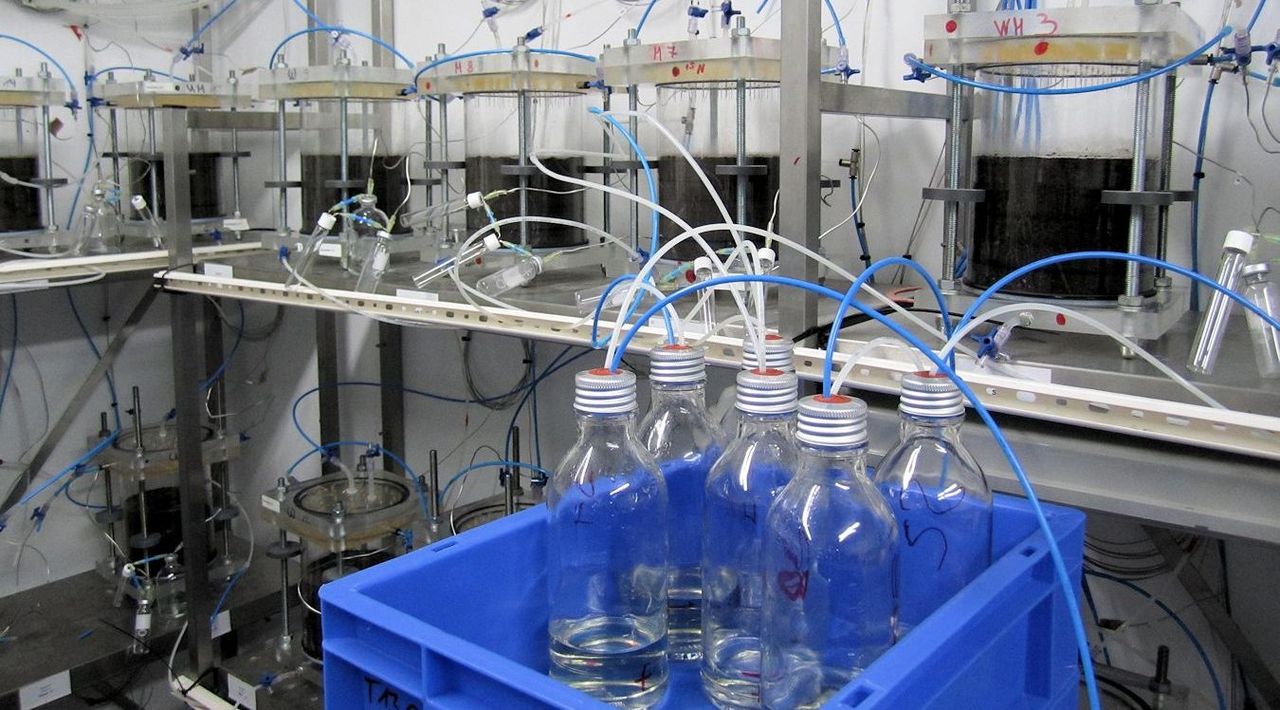Project
DeniDrain - Denitrification in the drainage zone

Measurement and modeling of nitrous oxide and nitrogen formation by denitrification in the deep vadose zone for site-specific estimation of nitrate degradation.
An important step towards mitigating nitrate inputs to groundwater is the comprehensive quantification of denitrification below the root zone (deep vadose zone).
Background and Objective
Denitrification in soil has been intensively studied for more than 100 years, but previous experimental studies and thus also the parameterisation of the models refer almost exclusively to the rooted zone. Therefore, there are still great uncertainties in quantifying nitrate degradation in the unsaturated leachate zone below the root zone (deep vadose zone). The extent to which this zone can reduce nitrate inputs into groundwater is controversially discussed. Previous studies show clear differences between denitrification in the topsoil and denitrification in the deep vadose zone, which calls into question the transferability of results and models from the topsoil to the deep vadose zone. Denitrification losses in the form of nitrous oxide (N2O) and molecular nitrogen (N2) have been little studied so far.
Thus, the aim of this collaborative project is to quantitatively determine the mitigation of nitrate inputs to groundwater through the degradation of nitrate by denitrification in the deep vadose zone.
Target Group
Science, regulating authorities, farming advisors and extension services, agricultural practice
Approach
The joint project is divided into several work packages. In the first step, typical sites in Germany are identified on the basis of the biogeochemical conditions in the deep vadose zone, which are important for denitrification, by means of maps and information systems. In the second step, soil monoliths are sampled and characterised at these sites. Using the 15N helium incubation method, the current denitrification rates (N2O and N2 emissions) and their nitrate leaching potential will be determined at these monoliths. Control factors of denitrification will be comprehensively investigated at further monoliths. The data obtained will be used to perform a location based assessment of denitrification in the drainage zone and regionalisation based on existing models for topsoil.
Our Research Questions
- What are the typical denitrification rates in the drainage zone? Are there any site impacts?
- What is the significance of denitrification in the deep vadose zone zone with regard to indirect N2O emissions and how variable is the N2O/N2 ratio?
- What is the effect of individual control variables on denitrification losses?
- Can mathematical model approaches for estimating denitrification, which are used for topsoil be transferred to the deep vadose zone?
- What suggestions can be derived from the measurement and model results for groundwater and climate protection with regard to the mitigation of nitrate inputs and N2O emissions?
Links and Downloads
Thünen-Contact

Involved Thünen-Partners
Involved external Thünen-Partners
-
Bundesanstalt für Geowissenschaften und Rohstoffe (BGR)
(Hannover, Deutschland)
Funding Body
-
Federal Ministry of Food und Agriculture (BMEL)
(national, öffentlich) -
Federal Office for Agriculture and Food (BLE)
(national, öffentlich)
Duration
4.2023 - 3.2027
More Information
Project funding number: 2822ABS033
Project status:
ongoing

![[Translate to English:] [Translate to English:]](/media/_processed_/6/4/csm_titel_CO2Kampagne8_afeea2273e.png)
![[Translate to English:] [Translate to English:]](/media/_processed_/4/1/csm_titel_93px_CO2Kampagne8_9b0f3354d4.png)
![[Translate to English:] Logo des Bundesministerium für Ernährung und Landwirtschaft](/media/allgemein/logos/BMEL_Logo.svg)